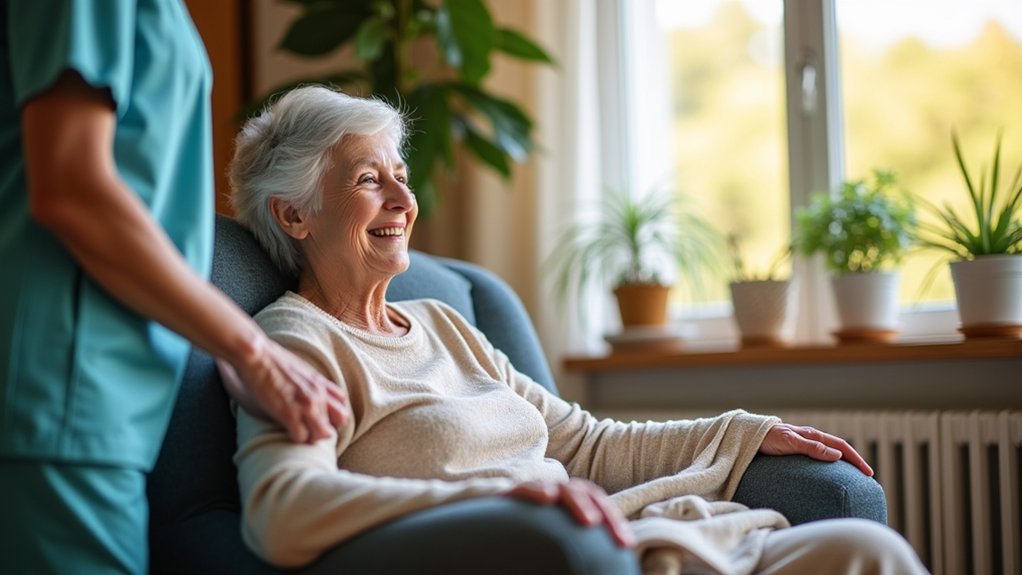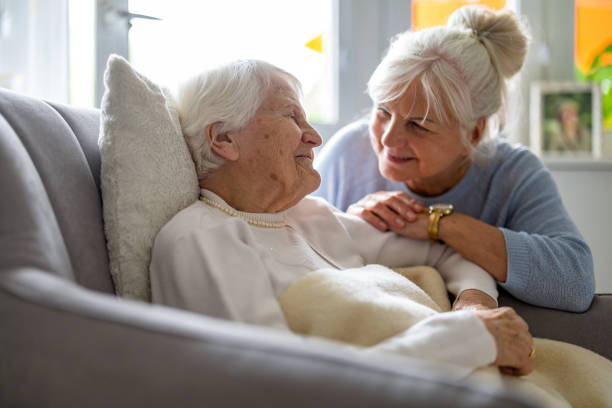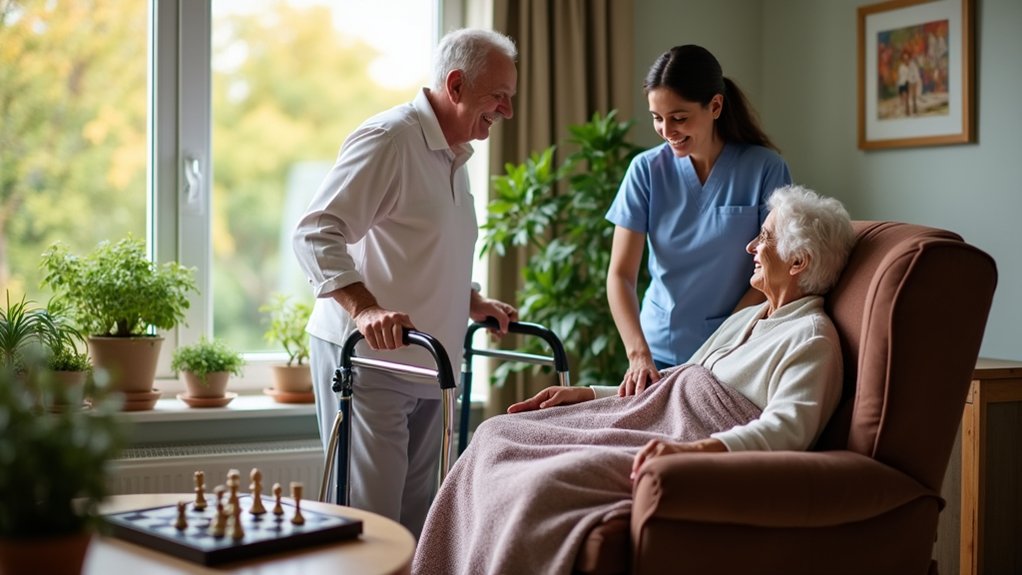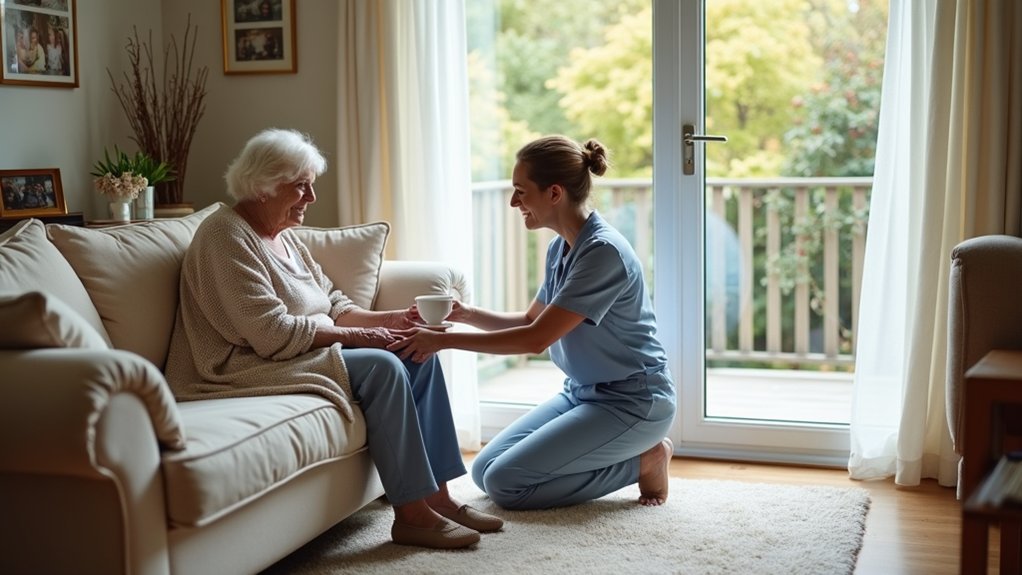When moving into assisted living, pack enough comfortable, familiar clothes for a week or two, including seasonal items. Bring medications for at least a month, health supplies, and important documents like insurance cards. Don’t forget cherished keepsakes, photos, or bedding that feel like home. Include essentials like smartphones and chargers for daily use. Add personal touches with favorite decorations to ease the shift. Stick around to uncover more tips for a smoother move!
Key Takeaways
- Pack comfortable, familiar clothing for a week or two, including seasonal items.
- Bring a month’s supply of medications and essential health supplies.
- Include important documents like ID, insurance cards, and advance directives.
- Add personal keepsakes and decorations to create a warm, familiar space.
- Pack essential electronics like smartphones, chargers, and assistive device backups.
Essential Clothing and Personal Items
Packing for a move into assisted living starts with the basics: your clothing and personal items. You’ll want to bring enough outfits for a week or two, focusing on comfort and ease. Choose familiar, well-fitting clothes that reflect your style and make you feel at home. Don’t forget seasonal items like jackets or sweaters to stay prepared for changing weather.
Next, pack personal items that bring joy and familiarity. Include cherished photos, a favorite blanket, or small keepsakes to create a comforting space. These touches help ease the shift for you or a loved one. Additionally, remember that personalized care tailored to individual needs is a hallmark of assisted living facilities like Commonwealth House, ensuring comfort and support.
Keep it simple, though—bring only what you’ll use or treasure. By prioritizing these essentials, you’re helping build a nurturing, supportive environment in this new chapter.
Medications and Health Supplies
A well-organized pillbox can be your best friend when moving into assisted living. As you prepare to support a loved one in this change, make certain all their medications are sorted and labeled clearly.
Pack enough for at least a month, including prescriptions and over-the-counter remedies they rely on. Don’t forget health supplies like bandages, thermometers, or glucose monitors if needed. Check with the facility about their medication management policies to coordinate care effectively. Medication management is essential in ensuring that seniors receive their medications safely and correctly.
You’ll also want to bring comfort items like heating pads or inhalers that ease daily challenges. Keep a list of their meds and dosages handy for quick reference.
Important Documents and Identification
While moving to assisted living, make certain you gather all essential documents and identification for your loved one. Having these items ready guarantees their safety and smooth shift.
Collect their Social Security card, driver’s license or state ID, passport, and birth certificate. Don’t forget insurance cards, including Medicare or Medicaid information, and any advance directives like a living will or power of attorney.
Keep these documents in a secure, accessible place so you can assist with medical or legal needs. Make copies as backups and consider a small fireproof safe for originals. Additionally, be aware that the community’s personalized care approach can help address specific health transitions during this move.
Familiar Furniture and Bedding
Comfort plays a key role when moving to assisted living, so bring familiar furniture and bedding to create a sense of home. If space allows, take a favorite chair or small table that’s tied to warm memories. These pieces can ease the changeover, offering a cozy spot to relax or read.
Check with the facility about size restrictions to guarantee your items fit.
Don’t forget your bedding—bring sheets, blankets, and pillows that feel like yours. Familiar textures and scents can soothe you during this shift. Additionally, active family involvement can further enhance the sense of comfort by providing emotional support during this transition.
Personal Keepsakes and Decorations
Treasures like personal keepsakes and decorations can transform your assisted living space into a true reflection of who you are. Bring cherished photos of loved ones, small mementos from past adventures, or handmade gifts that hold special meaning. These items don’t just decorate; they tell your story and invite connection with others. Consider displaying a few favorite pieces of art or wall hangings that spark joy. Engaging in creative activities, such as crafting, can foster social connection with fellow residents, enhancing your overall experience. If you’ve got a knack for crafting, pack supplies to create new decorations, sharing your talents with fellow residents. Choose items that uplift your spirit and encourage conversations, fostering a warm environment.
Daily Use Electronics and Accessories
Many of your daily routines rely on electronics, so don’t forget to pack the essentials for your move into assisted living.
Bring your smartphone to stay connected with loved ones and community members you serve. Include chargers and earbuds for convenience and private conversations that uplift others. If you use a tablet or laptop, pack those too, along with necessary cords, to share resources or coordinate volunteer efforts.
Remember to pack your smartphone, chargers, and earbuds to stay connected and uplift others through private conversations during your move.
Don’t overlook smaller items like a digital watch or alarm clock to keep you on schedule for helping out.
If you rely on hearing aids or other assistive devices, make certain you’ve got backups and batteries. These tools help you stay engaged and ready to support those around you every day. Additionally, consider how personalized care plans can enhance your experience by ensuring you have all the necessary devices and support tailored to your needs.
Frequently Asked Questions
Can I Bring My Pet to Assisted Living?
Wondering if you can bring your pet to assisted living? You’re not alone in wanting your furry friend by your side.
Check the facility’s pet policy first, as many welcome pets with certain rules. Make sure you’ve got all necessary supplies and vet records ready.
Your pet’s comfort matters, so create a cozy space for them. Helping both of you settle in brings joy to everyone around!
Are Meals Provided in Assisted Living Facilities?
Hey there, you’re probably wondering if meals are provided in assisted living facilities.
Good news—most places offer daily meals tailored to your dietary needs! You’ll enjoy nutritious, balanced options, often with a communal dining experience that fosters connection.
Don’t worry about cooking; they’ve got you covered. Check with the facility for specifics, and let them serve you while you focus on supporting and caring for others around you.
What Activities Are Offered for Residents Daily?
Wondering what activities you’ll find daily as a resident? You’re in for a treat!
Immerse yourself in a variety of engaging options like arts and crafts, fitness classes, and social games that let you connect with others.
Join book clubs or gardening groups to share your passions.
You’ll love helping fellow residents through volunteer opportunities or simply by lending a listening ear.
There’s always a way to serve and thrive!
Is Transportation Available for Medical Appointments?
Wondering if transportation’s available for medical appointments?
You’ll be glad to know that many assisted living communities offer this essential service.
Don’t stress about getting to the doctor; they’ve got you covered with scheduled rides.
You can focus on helping others, knowing your needs are met.
Just check with the facility to confirm their policies and availability.
It’s all about making life easier for you and those you care for!
How Often Can Family Visit Me There?
Wondering how often your family can visit you? You’ll be glad to know that most assisted living communities encourage frequent visits to keep connections strong.
Check the specific visiting hours and policies at your chosen place, as they can vary. Don’t hesitate to ask staff for details—they’re there to help!
Welcoming your loved ones often brings joy, and you’re helping them feel supported by staying connected.





